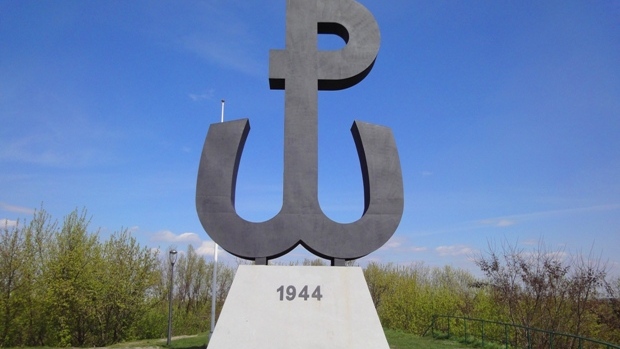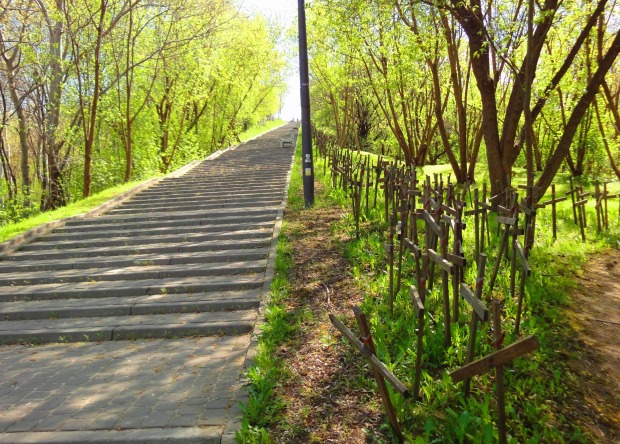Warsaw Uprising 1944
The 63 day battle in Warsaw for liberation from German occupation during World War II
The Warsaw Uprising (in Polish: Powstanie warszawskie) of 1944 of lasted some 63 days. These days were both tragic and heroic in trying to liberate the Nazi occupied Warsaw from the Germans. The Polish soldiers and citizens of Warsaw banded together to provide resistance to the Nazi Germans who were shelling and invading the city. Some 30,000 Home Army soldiers took up arms to fight from the Warsaw District. Due to a lack of weapons (largely because the Allies refused to supply them) only around 10 percent of the Home Army soldiers were armed. The uprising wasn’t even remotely fair.
The Polish resistance faced 20,000+ fully armed soldiers and tanks, mortar teams, and cannons and that’s not to mention other artillery and aircraft forces that the Nazi’s called in as support. Himmler left his soldiers under orders to kill all of the residents of Warsaw once it was captured as an example to the rest of Europe. When the Uprising was over 150,000 civilians died and over 500,000 residents were forced to leave the city once Warsaw’s capitulation.
Among the destruction were nearly all of the government buildings. The Royal Castle was completely destroyed along with other buildings nearby that served as administrative purposes. The city was devastated and many residents were taken to POW camps and concentration camps despite the orders of Himmler. The whole resistance was to make Poland’s sovereignty a reality after the war. A country and a city that was still completely Polish and anything but German. The resistance to the Nazi’s provided by the citizens of Warsaw was the largest act of this type in Nazi-occupied Europe. Much of what can be seen in Warsaw today in the Praga district was un-touched by the invasion of Warsaw Old Town. The original historical buildings there are still standing. However, with the other parts of Warsaw this is not the case. The devestation was greatly encompassing upon the administrative section of Warsaw.
To pay tribute to the numerous heroes who lost their lives during the Uprising of 1944 there is a Warsaw Mermaid overlooking the Vistula River who has the face of Krystyna Krahelska – a poet and author of one of the most popular songs of the Uprising, “Hej chlopcy bagnet na bron” (Hey Boys, Fix Bayonets!) and many others.
The first day of fighting for the Home Army resulted in heavy injuries during the operation. The Soviet authorities played down the Uprising when informing Prime Ministers Mikolajczk and Churchill that the Russians did not intend to support the belligerent insurgents (Home Army) Joseph Stalin mocked the operation all together.
On the 2nd day of the operation the Polish forces took up strategic positions to re-take the city and overthrow the Nazi occupation. The Church of St. Casimir was turned into a make shift hospital for the Home Army wounded. Over 1,000 people died in an air raid. Very few were rescued from the debris.
Shortly afterward and toward the first week of the war tank traps were employed and several Panzers would fall prey to them. There was fierce fighting for the Cathedral Basilica of Martyrdom of St. John the Baptist. Through August 21-27th a bomb raid and a mass attack of the German infantry completely destroyed the church. Likewise the same fate for the Basilica of the Holy Cross and of course the very same fate for King Sigismund III Kolumn’s secular monument which was raise in 1644. The Prudential was the tallest building in Poland and one of the tallest ones in Europe – it however did not share the same fate as the other demolished buildings. Some Polish soldiers flew a red and white flag above it and it was only slightly damaged. The building was reconstructed in a socialist style and is undergoing modern reconstruction.
As one of the most monstrous acts the Germans committed in the Uprising of 1944 was the rigging of numerous cars with bombs. A kind of ‘Trojan Horse’ if you will. At the barricade closing the end of Castle Square, the Nazis left alone an explosive Borgward carrier. The Home Army erroneously assumed it was a small tank and inconsiderately drove it into the streets of the Old Town. At around dust during a triumphal presentation, the vehicles exploded killing some 500 people. This ruthless act was commemorated with a memorial tablet in honor of those who lost their lives in the explosions. The city was destroyed in such a way that it was razed completely into rubble, cinders, and dead bodies.
Because of the paramount destruction that the Uprising brought with it the government of Poland decided to make a monument of all the rubble. The Warsaw Uprising Mound is approximately 120 meters high. It was constructed in 1946-1950 from Warsaw debris. The hill has become a pantheon, as the material contained not only ruins but also remains of city residents killed in the Uprising. In the 50th anniversary of the Uprising in 1994, former soldiers of the Home Army placed the 15-meter high Fighting Poland emblem on its peak. The top of the Uprising Mound can be reached by going up the longest stairs in Europe, 400 steps and 40 landings. A real sight to see. You can practically see the whole of Warsaw from on top of the mound. A definite place to stop by for any serious European back packer or tourist!
